Warriors divided over mascot controversy
September 24, 2020
As of July, the Martin Warrior headdress, a well-known staple in Arlington for over three decades, has been formally discontinued. While it may be unexpected and sudden, many of the student body and alumni all have different stories or opinions to share.
The headdress has a symbolic history in the Native American culture, as well as a sign of school spirit for 38 years here at Martin. This summer, it came to the attention of administrators that the headdress is not exactly culturally appropriate.
Some staff, students, and even alumni have argued that the warrior headdress is simply respecting the strength and nobility of Native American culture while also serving as a symbol for Martin at the same time. Although these individuals may or may not be Native Americans themselves, the headdress has been a trademark at Martin for years now and is widely enjoyed by various groups of people.
Like most schools when it first opened, a mascot and image were voted on by staff and students back in 1982. Nowadays, there are restrictions from the district on what these mascot images can be and limits to what students can choose from. However, that was not the case in the 80s. It was originally the idea of the “Martin Warriors” that was founded, but it was not until the early 90s when the image we all know of the headdress was first introduced. Soon after, the Rockin M stood alongside the headdress to represent the Martin Warriors.
All of this school spirit history rooted deep into Arlington has made quite an impact on Martin families.
Byron Beets, dubbed as “Magic Man,” said he has been involved in Martin from its very beginning. Coaching sports, substituting, and completely immersing himself with school spirit, Beets has always been a Martin superfan.
“The community of Martin people is a treasure,” Beets said. “I never thought of the headdress as a representation of Indian culture. Rather, as a strong, war warrior.”
Although his daughters, members of some of the first graduating classes at Martin, were sentimental about the image and were sad to see it go, Beets said he appreciated the lessons learned from his time at Martin and always strived to support all the kids.
When the news of the mascot change first circled the media, Facebook was a source to reckon with – specifically, the Martin Alumni Facebook page. Hundreds of posts and comments regarding everyone’s opinion swarmed the site, causing harsh disagreements to swiftly occur. Out of the alumni interviewed, 40 percent were for the mascot change, and 40 percent were against it, while the remaining 20 percent, were neutral.
Alex Taylor, class of 2009, questioned the controversy.
“My thoughts were why are we getting rid of the history of the school overnight?” Taylor said. “And are other school mascots like Lamar Vikings, Sam Houston High School and Bowie High School going to soon be following?”
John-Nathanael Caesar, class of 2018, said he supported the decision.
“People are starting to wake up to the injustices our society has swept under the rug,” he said. “With this comes the knowledge that symbols have power, and just because we tear something down or change a mascot doesn’t mean we’re erasing our history. We’re acknowledging the wrong and correcting it the best we can as time goes on.”
Other alumni, such as class of 2006 graduate Amanda Joyner, had a more neutral approach to the topic.
“I feel that changing the mascot is being done under today’s political climate to appease everyone’s beliefs and be politically correct,” Joyner said. “This is an attempt to keep peace and minimize any drama. MHS is trying to be more sensitive and aware of everyone and the beautiful melting pot that the U.S. is.”
In the Texas-Oklahoma Plains, Native American culture is not uncommon to come across. In this day and age, most of these Native groups believe that the usage of their headdress in a “school spirit” manner is insensitive and disrespectful to their heritage. While this might not be the case for all Native Americans, the majority was enough for our mascot to change.
Melissa Collet, a Martin graduate of 2000, is of Kiowa and Cherokee descent. To Collet, the image of the headdress and idea of a warrior has a much deeper meaning than school spirit.
“Strength, bravery, resiliency, pride…a Native American headdress is a symbol of bravery and something to be earned,” Collet said. “I think that’s why it offends me so much that students would dare to dress up like this to go to a football game.”
This summer the NFL former Washington Redskins changed their name to the Washington Football team. Ultimately, the term “redskin” is recognized as a derogatory slur towards Native Americans. In the image of the Martin headdress, the feathers are designed to spell out “Warriors,” and the face spells out “MHS.” At a different perspective though, one that looks at the cultural impact the image has, the nose and forehead are extenuated, not to mention the fact that the image depicts a Native American with red skin. Collet explained just how impactful the image is to her, as a Native American woman.
“The image alone does not evoke a sense of strength, courage, or honor,” she said. “It is simply a cartoon of a Native man in a war bonnet. The image is of a race of people frozen in a time when Native Americans were seen as a nuisance to the people of the United States, not something to behold with glory or honor. The best way to honor the Native American warriors of the past isn’t by paying homage to them in a caricature.”
The thought that the logo is disrespectful to Native American culture is, as a matter of fact, not agreed with by all Native Americans.
Kailee Collier, a current Martin junior, is Cherokee Indian from a predominantly Native American town in Oklahoma. Both she and her family share a different point of view on the matter.
“I like the look of the warrior headdress, and I thought that it was a great design without being insulting,” Collier said. “The change was surprising to me. Personally, I didn’t find the headdress offensive. I thought it was a good way to showcase Indian culture without being seen as a jab to our way of life. With everything going on, I think it is important to not offend any culture, so I don’t think the people changing the mascot are in any way wrong.”
Collier is not the only Martin student who disagrees with the change. Some students argue that the image has always been out of school pride, and never to purposely disrespect Native American culture. The headdress symbol is held deeply to represent just how strong and fearless Martin can be. Some might even say, the image boosts respect for Native American culture through our massive amounts of school pride.
The image has been around for so long, it can be a hard thing to let go. It is difficult for a tight-knit community like Martin to understand the impacts the actions had on groups of people different than us, strictly because tradition is so important in today’s world.
Ever since the initial announcement, current Martin students have been torn to the two sides of the controversy. Junior Kadence Turner said she was taken back with the sudden change.
“Although people were offended by it, I disagree with it and would have wanted an equal vote on such a big change,” she said. “Personally, I do not think the headdress is offensive because we are not purposely trying to offend a culture.”
“The meaning of cultural appreciation in this instant is the headdress,” junior Kirstyn Dickey said. “As a sacred symbol, it shouldn’t be used in any way besides the matter of representing that culture with the people who practice those traditions, not as a costume or a logo. It’s just a high school logo, it’s not a life-altering matter. Simply just respecting someone’s culture and lifestyles.”
Principal Marlene Roddy was the voice to announce the official change in mascots. Though it was not entirely her decision, she was on the receiving end of both positive and negative feedback.
“As building principal, I am not an entity to myself,” Roddy said. “I don’t make decisions broadly for the campus without checking with the district and supervisors. Anything that is ever a controversial issue I share with the district office. The district wants to always be very aware, and never wants to hurt people.”
The sudden change does spark a bit of confusion in the student body of why such a decision is made now, and not 10 years ago or 10 years in the future.
“It has always been brought to our attention over the years,” Roddy said. “There were Native American groups back in the 90s that asked us to quit using the warrior symbol, so we moved away from having a mascot for that reason. The headdress, concerns with kids dressing up in Native American clothing and dancing around, and especially the Warrior Chop performed at sporting events have had lots of complaints, some as recently as last year.”
“It is important that we are very sensitive to other cultures as a school,” she said. “As a public institution, we can’t tread on other people’s beliefs and say it’s okay because they don’t mind. We must understand who we are speaking for, and what we are representing.”
For students who own warrior merchandise with the headdress previously on it, there will be no penalty for sporting the logo. It will take time for the image to disappear, and it is not expected to dissolve instantly. T-shirts and overall/coveralls can still be worn, but clubs and other Martin organizations are encouraged to move away from the image as soon as possible.
Images of the headdress in places around the school such as the Upper Gym Lobby’s floor, in the front entrance dream catcher, and other murals around campus have been or will be painted over or replaced.
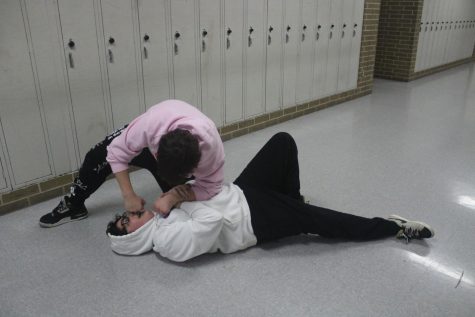
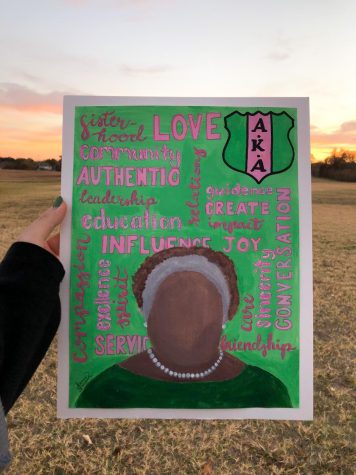
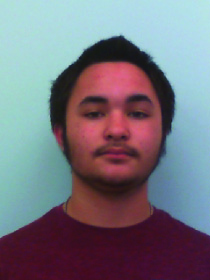
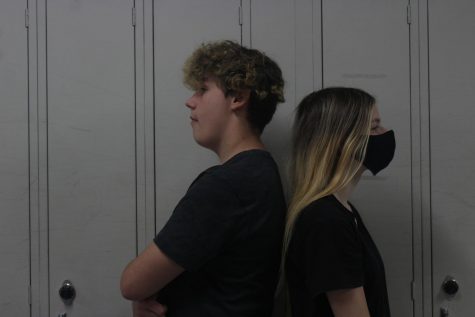
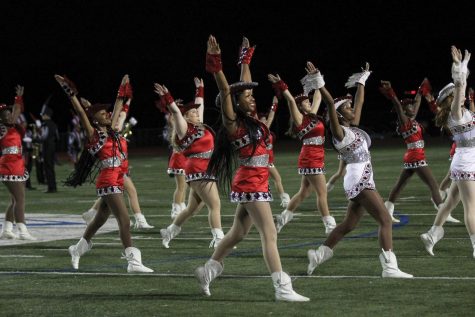
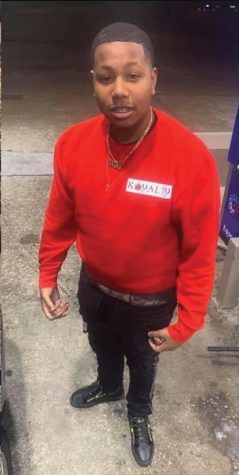
Kirstyn Dickey • Sep 25, 2020 at 3:41 pm
You did amazing Mal! You presented this very well 🙂
ally little • Sep 25, 2020 at 11:36 am
I think this piece is absolutely amazing! it does a great job of showing all views of the controversy without seeming opinionated, I absolutely loved reading it.
Jordan Clark • Sep 24, 2020 at 11:19 pm
Mallory I am so proud of you and this amazing story! This was such a big story to take on and you handled it beautifully. Helping edit it was a treasure and I am happy to see how far you have come in the past few years I have known you. Great job! xoxo, jo